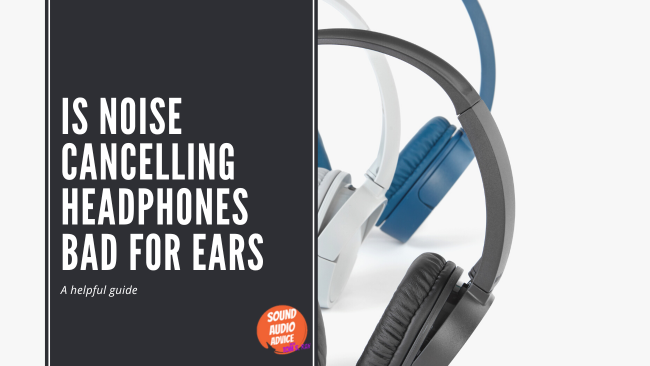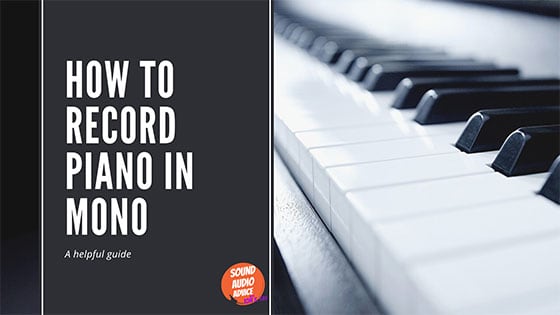
Reasons To Return Headphones
April 5, 2023
Is It Ok To Wear Headphones With Wet Hair
April 5, 2023Is Noise Cancelling Headphones Bad For Ears
Noise cancelling headphones have become increasingly popular in recent years, but many people are concerned that they may be bad for ears. With technology advancing so quickly and the widespread use of noise-cancelling headphones, it’s important to evaluate their safety and understand potential risk factors associated with them. In this article, we’ll look at what science has to say about noise-cancellation headphones and their effects on our hearing health. We’ll also examine ways to reduce any potential risks when using these types of headphones. So if you’re wondering whether noise-cancelling headphones could be damaging your ears, read on!
Definition
Noise cancelling headphones are a type of audio device used to reduce or eliminate external noise. They work by using microphones to identify and analyze background sound, then producing an opposing waveform that cancels out unwanted sounds. This allows the user to better hear their music without distraction from any ambient noise.
There are two main types: active and passive noise cancellation. Active utilizes advanced technology to actively identify, monitor and adjust for unwanted sound in real time; whereas passive simply reduces ambient sound through insulation, such as having closed-back earcups with thick padding around your ears.
So, is this kind of product bad for our ears? In general, no – these devices aren’t likely to cause hearing damage since they don’t produce loud noises themselves. That said, it’s still important to remember to use them responsibly, set volume levels appropriately and take regular breaks from listening when needed. Next we’ll look at different types of noise cancelling headphones available today.
Types Of Noise Cancelling Headphones
Noise cancelling headphones come in a variety of types to suit every individual user’s needs. There are over-ear models that fit completely around the ear, while on-ear designs sit directly on top of them and are often lighter and more portable than their counterpart. On-ear noise cancelling headphones tend to offer slightly less effective sound isolation, but still provide decent levels of audio clarity thanks to their smaller size. In addition, some manufacturers have created hybrid designs which combine both features for users who want the best of both worlds.
The next type is called active noise cancellation (ANC), which is designed to reduce environmental sounds by generating “anti-noise” waves through built-in microphones. This anti-noise helps cancel out background noises such as traffic or construction work, making it ideal for people looking for better focus when working from home or commuting. ANC also allows you to control just how much external noise you would like blocked out depending on your preferences – perfect if you do not always need complete silence!
Finally, there are open back headsets that allow natural sound leakage into the earcups so that ambient noises can be heard without compromising comfort. These are great options for those who may find themselves needing to listen in on conversations or other activities going on around them while they’re listening to music or enjoying media content with their headphones on. With all these different types available, anyone can find a pair of noise cancelling headphones suitable for their specific needs and lifestyle. Moving forward, let us take a closer look at the benefits of using noise cancelling headphones.
Benefits Of Using Noise Cancelling Headphones
Noise cancelling headphones can be a great tool for blocking out unwanted noise. The benefits of using them are numerous and include improved focus, reduced stress levels, better sleep quality and overall relaxation. Here’s a quick look at the advantages of these devices:
- Reduce Stress Levels – Noise cancelling headphones block external sounds such as traffic or other people’s conversations which helps reduce stress levels significantly.
- Improve Focus – By creating a quieter environment, it is easier to stay focused on tasks with fewer distractions. This ultimately leads to higher productivity and greater efficiency in completing tasks.
- Better Sleep Quality – Being able to block out disruptive noises while trying to fall asleep will help improve sleep quality by allowing you to get more restful nights of sleep without interruption from outside sources.
These benefits also extend beyond just personal use; noise cancelling headphones can be beneficial for those who work in loud environments or open office spaces that don’t offer much soundproofing from distracting noises around them. With all these advantages, it is clear why so many people choose to invest in some form of noise-canceling headphones and earbuds for their daily routine.
Despite the numerous benefits, there may still be potential risks and disadvantages associated with the use of noise cancelling headphones that should be considered before investing in them.
Is Noise Cancelling Headphones Bad For Ears? Potential Risks And Disadvantages
Despite the many benefits of noise cancelling headphones, there are potential risks and disadvantages that should be considered before purchasing. The most significant risk associated with these devices is that they can cause hearing damage if used improperly or for extended periods of time. When using noise cancelling headphones at high volumes, sound waves become amplified which can lead to permanent damage to your ears if not monitored closely. In addition, wearing headphones for too long can also result in ear fatigue and discomfort.
Furthermore, people who rely heavily on external sounds like traffic noises may find it difficult to adjust when using noise cancelling devices as they block out all external sounds regardless of volume level. This could create hazardous situations such as being unable to hear approaching cars or other nearby dangers while crossing the street.
Though noise cancelling headphones offer many advantages and provide an escape from distracting background noises, users must remain mindful of the potential risks associated with them and take precautions accordingly. To ensure safe listening habits, keeping headphone use below 85 decibels and taking regular breaks is recommended. With proper usage and maintenance, individuals can enjoy their music without having to worry about any negative effects on their ears. Moving forward, let’s explore how exactly do noise cancelling headphones work?
How Do Noise Cancelling Headphones Work?
Noise cancelling headphones use a variety of methods to reduce noise. Some employ active noise-cancellation technology, which uses microphones to pick up sounds and then produces sound waves that are opposite in phase, effectively reducing the level of background noise. Other types of noise cancellation involve creating tight seals around the ears with soft materials like foam or silicone, blocking out more external noises.
The most advanced forms of noise-canceling technology create an acoustic environment within the ear cups by using digital signal processing (DSP) algorithms. DSP can identify specific frequencies that need to be reduced, such as those from jet engines or traffic noise. It then generates signals that cancel them out before they reach your eardrums. This creates a quieter listening experience without compromising audio quality.
Though these technologies help block out unwanted sounds, it’s important to remain aware of how loud your music is when you’re wearing headphones since prolonged exposure to high volumes could lead to hearing loss over time. With this knowledge in mind, we can move on to explore effects on hearing health associated with using noise cancelling headphones.
Effects On Hearing Health
Noise cancelling headphones have the potential to be bad for ears. They can produce a pressure differential which could cause damage to the ear’s delicate structures, such as the eardrum or inner ear bones. This is especially true if they are used too loudly and for long periods of time. To avoid this problem, users should make sure their noise cancelling headphones fit properly and that the volume level stays at an appropriate level.
In addition to physical effects on hearing health, there may also be psychological impacts from using noise cancelling headphones. Constant use of these devices has been linked to feelings of isolation and disconnection from one’s environment; it can also lead to difficulty in focusing due to decreased awareness of surroundings. People who experience these issues should take regular breaks while using their noise-canceling headphones and limit their usage over extended periods of time.
Furthermore, research suggests that some people may find it difficult to fall asleep when they wear noise cancellation headphones. It’s important for them to try out different models until they find one that doesn’t interfere with sleep quality. Moving on, let’s explore how exactly noise-canceling headphones impact sleep quality…
Impact On Sleep Quality
Noise cancelling headphones have become increasingly popular for individuals looking to improve sleep quality. The technology is designed to block out external noises, creating a peaceful and tranquil sleeping environment. However, using noise-cancelling headphones throughout the night can also cause problems with your hearing health as well as disturb your natural sleep cycle.
The use of noise-canceling headphones while sleeping may lead to further auditory damage if used too often or at high volumes. This type of headphone blocks out more than just lower frequency sounds but higher frequencies as well which could be dangerous over extended periods of time due to increased exposure levels. Additionally, soundproofing one’s bedroom so greatly that all other ambient noise is eliminated can disrupt the body’s circadian rhythm by tricking it into believing there are no changes in day/night cycles.
Using noise-canceling headphones during bedtime can provide some relief from loud or disruptive environmental noises however, caution should be taken not to rely on them too heavily and potentially risk long term hearing damage or disruption to natural sleep patterns. With this in mind, transitioning into an understanding of the difference between active and passive noise cancellation becomes an important step towards finding a balance between comfort and safety when attempting to achieve better sleep quality.
Difference Between Active And Passive Noise Cancellation
Noise cancelling headphones are a great way to improve sleep quality by reducing external noise. But it’s important to understand the difference between active and passive noise cancellation when selecting the right pair of headphones for your needs.
Active noise cancellation (ANC) is specific technology that uses microphones to detect incoming sound waves, which then creates an opposite waveform in order to cancel out the ambient noise being heard. This type of technology can be found on certain high-end models providing more effective noise reduction than most other types of headphones.
Passive noise cancellation works differently than ANC as they rely solely on physical design elements such as padding or material used to block outside noises from entering into earcups. Although not as effective at blocking outside sounds like ANC, this type of headphone still offers some level of protection against environmental sounds without draining battery life due to its lack of use of any electronic components.
The next section will provide tips for safe listening practices when using either style of headphones with regards to volume control and duration of usage.
Tips For Safe Listening Practices
Noise-cancelling headphones can provide a great listening experience and are generally considered safe to use, but it’s important to take some precautionary measures. First of all, keep the volume at a comfortable level. If you need to turn up the volume in order to hear clearly over background noise, then this is likely too loud for your ears and could lead to hearing damage. It’s also important not to get into the habit of using these headphones in noisy environments – they should only be used when necessary.
It’s also important not to forget that wearing noise-canceling headphones can block out other sounds which may be hazardous or distracting when outside, such as traffic or sirens. To ensure safety, consider removing them occasionally so you can still be aware of environmental noises around you. When possible, opt for lower-volume settings on devices like phones and laptops instead of relying solely on headphone volume control.
Listening with caution and awareness will help protect your ears from potential long-term harm from any type of audio device. With mindful use of sound levels, noise cancelling headphones offer an effective way to enjoy music without compromising hearing health. These tips will help make sure your listening experiences remain pleasant while avoiding any risks associated with excessive noise exposure. By taking these simple steps we can continue enjoying our favorite tunes safely and responsibly. Looking ahead now, let’s explore some alternatives to noise cancelling headphones…
Alternatives To Noise Cancelling Headphones
There are a variety of alternatives to noise cancelling headphones that can be used to reduce sound in the environment. One option is earplugs, which come in many shapes and sizes designed for different levels of hearing protection. Earplugs fit snugly into the ear canal and block out some of the surrounding noise. Another alternative is soundproofing materials such as foam insulation or acoustic tiles. These materials absorb sound waves that enter the room, reducing overall noise levels significantly. Finally, one might consider using white noise machines or apps on mobile devices to mask unwanted sounds with soothing background noises like ocean waves or rainfall. All these methods provide an effective way to reduce environmental noise without risking potential damage to ears from prolonged headphone use.
Frequently Asked Questions
How Much Does A Pair Of Noise Cancelling Headphones Cost?
When it comes to noise cancelling headphones, one of the first questions that come to mind is how much they cost. Prices vary depending on several factors such as brand and model, but overall, you can expect to spend anywhere from $50 to over $400 for a pair. It’s important to consider your budget when selecting a pair of noise cancelling headphones so that you don’t end up spending more than necessary.
In addition to considering price, there are also other features worth looking into before buying a pair of noise cancelling headphones. Noise cancellation technology has advanced significantly in recent years, with some models able to block out almost all background sound. Other features like comfortability, battery life, and wireless connectivity should be taken into account when choosing the right set for you.
Overall, if you want quality noise-canceling headphones without breaking the bank, do your research beforehand so that you’re getting what best suits your needs and preferences. With careful consideration of these various factors and an understanding of where prices fall on the spectrum, you will be sure to find the perfect pair at a reasonable price!
Can Noise Cancelling Headphones Be Used For Music?
Noise cancelling headphones have risen in popularity over the last few years, so it’s no surprise that many people are wondering if they can be used for listening to music. The short answer is yes; noise cancelling headphones are excellent for enjoying your favorite tunes without distractions or background noise.
When using noise cancelling headphones while listening to music, the sound quality is considerably improved compared to standard headphones due to their advanced technology and features. Furthermore, you won’t have any of the external noise interfering with your musical experience. This makes them ideal for anyone who enjoys listening to music on-the-go or wants a more immersive audio experience at home.
The only potential downside when using these types of headphones is that they may not provide as much bass as other models on the market – however this isn’t necessarily an issue unless you’re into heavy metal or hip-hop genres. Ultimately though, whether you opt for noise cancelling headphones or not will depend on personal preference and budget constraints. As long as you do your research beforehand, there’s really nothing stopping you from getting great sound quality out of your new pair of cans!
What Is The Best Type Of Noise Cancelling Headphones For A Particular Environment?
It’s important to consider what type of noise cancelling headphones are right for a particular environment. Different types can offer different benefits, depending on the user’s needs and preferences. Noise cancellation technologies vary from model to model, so it’s important to do some research before buying a pair of headphones.
Active noise-cancellation (ANC) is one of the most popular features found in modern headphones. ANC works by emitting sound waves that cancel out background noises like airplane engines or city traffic. This technology is ideal for people who need to focus in loud environments, such as commuters or travelers. It also helps reduce fatigue and stress when listening to music at high volumes.
Passive noise isolation is another common feature found in many models of headphones. Unlike ANC, passive noise isolation does not actively block external sounds; instead, it passively blocks them out with materials like foam or rubber padding around the earpieces. These materials absorb ambient noises rather than blocking them completely, so they are more suitable for quieter settings where you don’t want your audio interrupted by outside interference.
The best choice depends on the individual’s environment and personal preferences – active or passive noise-canceling capabilities may be necessary if there is a lot of external interruption while listening; however, comfort should always be taken into consideration when selecting a pair of headphones too!
Are Noise Cancelling Headphones Comfortable To Wear?
When it comes to wearing noise cancelling headphones, comfort is key. From the texture of the material against your ears to how snugly they fit, there are a few factors to consider when determining if these types of headphones are suitable for you.
For starters, many customers find that over-ear headsets tend to be more comfortable than earbuds due to their larger size and softer cushioning. Additionally, adjustable headbands can help provide an even better fit by allowing users to control the tightness around their heads. Here’s a list of some other important features that make noise cancelling headphones more comfortable:
- Lightweight design – Look for pairs with lightweight materials so you don’t feel weighed down or uncomfortable after long periods of wear.
- Breathable fabric cushions – Opt for ones with breathable fabrics that won’t trap heat and cause sweating during extended use.
- Flexible hinges – Choose models with flexible hinges that allow you to adjust them easily without breaking them in the process.
- Noise isolation – Make sure they provide superior sound isolation from outside noises so you don’t have to crank up the volume too loud and risk damaging your hearing in the long run.
- Durability – Invest in durable products made out of quality materials such as metal or plastic so they last longer and remain comfortable regardless of regular use.
Overall, finding a pair of noise cancelling headphones that is both effective at blocking out unwanted sounds while still being comfortable enough for daily wear doesn’t have to be difficult task. With just a little bit of research into what features best suit your needs, you should be able to find one perfect set suited just right for you!
Are There Any Age Restrictions For Using Noise Cancelling Headphones?
When it comes to finding the right headphones, age restrictions are an important factor to consider. Noise cancelling headphones can be used by people of all ages, although some considerations need to be taken into account when choosing a pair:
- Volume settings should not exceed safe levels as determined by audiologists and physicians.
- Children’s ears may be more sensitive than adults’, so soundproofing or noise canceling capabilities must also take this into consideration.
- Consider purchasing specialized headphones designed specifically for children if they will be using them regularly.
For those unsure about what type of headphones to buy for a child, consulting with a pediatric audiologist is advised. They can assess hearing health and determine which features would work best for each individual user. Additionally, many companies that specialize in headphone production offer models tailored specifically for younger users, offering additional safety measures such as limited volume control settings and physical design elements that make them easier to use and wear.
No matter who is using noise cancelling headphones there are several factors that should always be kept in mind; ensuring proper fit on the head and checking device compatibility being two of the most important ones. With these rules followed, anyone can safely enjoy their listening experience without worrying about any potential risks associated with prolonged usage.
All in All
In conclusion, noise cancelling headphones can be a great investment for those who want to enjoy their music or just block out the outside world. They typically range in price from around $100 up to several hundred dollars depending on the features and quality of the headphones. Furthermore, they are comfortable to wear and there aren’t any age restrictions when it comes to using them.
However, one concern with noise cancelling headphones is that they may cause damage to your ears if used improperly or at too loud of volumes. It’s important to make sure you’re not listening at excessively high levels as this could potentially cause hearing loss over time. Additionally, different types of headphones work better in certain environments than others so make sure you do your research before investing in a pair of noise-canceling headphones.
Overall, noise cancelling headphones can be an excellent addition for anyone looking for a way to reduce external sound interference while still enjoying their favorite tunes. Just remember to use them safely and responsibly; your ears will thank you later!
Thanks for reading.
Tom
I’m Tom S. Ray and I’m head mastering engineer at Audio Unity Group. I also hold a bachelor with honours degree in music from Kingston University in London, I lecture mastering to students in Edinburgh College and to my online students via my Mastering Mastery audio mastering online course.







